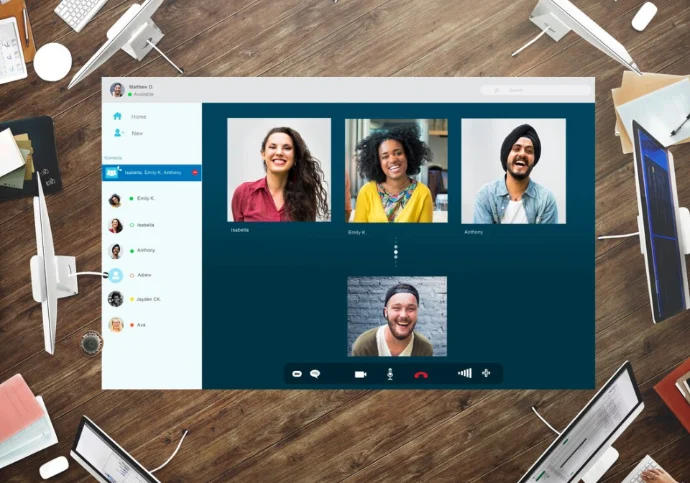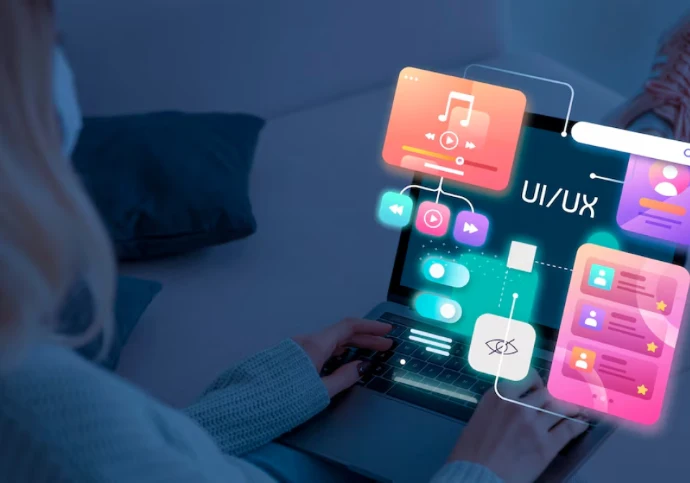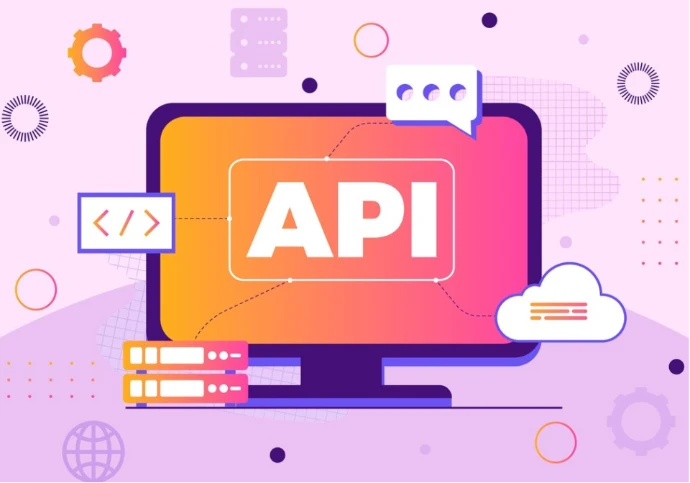Table of Contents
- Summary
- Introduction
- What are Microsoft Teams?
- Key Features of a Microsoft Teams-like App
- Communication and Collaboration
- Video Conferencing
- File Sharing Feature
- Task Management
- Calendar
- Third–Party Integration
- Security and Encryption
- Multi-Platform Accessibility
- Personal Apps and Conversational Bots
- AI-Powered Assistance
- Technology Stack for Development
- Frontend
- Backend
- Database
- Cloud and Hosting
- Real-time Communication
- Security
- How to Build Microsoft Teams-like apps?
- Define Your Goals and Requirements:
- Understanding System Architecture
- Building the User Interface (UI)
- Developing the Server-Side Infrastructure
- Integrating Third-Party Services and APIs
- Testing and Deployment
- Factors That Affect the Cost of Developing a Teams-like App
- Platform Development Costs
- UI/UX Design Costs
- Integration Costs
- Infrastructure Costs
- Maintenance Costs
- How Much Does It Cost to Develop a Teams-like App?
- Why Choose QSS Technosoft for Development?
- Use Cases and Benefits for Businesses
- Remote Team Collaboration
- Large-Scale Enterprise Communication
- Project Management and Task Tracking
- Enhanced Productivity and Workflow Efficiency
- Conclusion
- FAQs Section
Summary
This blog provides a comprehensive guide to developing a Microsoft Teams-like app, covering essential features, technology stack, and step-by-step development process. It highlights key functionalities such as chat, video conferencing, file sharing, task management, and AI-powered assistance. The post also explains factors affecting development costs, including platform choice, UI/UX design, integrations, infrastructure, and maintenance, with estimated costs ranging from $30,000 to $80,000. Finally, it emphasizes how QSS Technosoft’s expertise ensures secure, scalable, and tailored collaboration solutions for businesses.
Introduction
Microsoft Teams is a robust messaging and collaboration platform designed by Microsoft. As digital workplaces become more widespread, they offer forward-thinking, complex features so that businesses can work better together.
Adopting this platform offers users an incredible array of benefits that help teams collaborate quickly, efficiently, and productively to achieve results they'd otherwise be unable to reach. Its popularity is no surprise since it allows multiple teams in various environments to communicate truly in the moment and operate with maximum effectiveness.
Creating a Microsoft Teams-like app may initially seem like an overwhelming task, but it can be straightforward if executed correctly.
QSS Technosoft Inc. is a leading global software development company specializing in creating high-quality, secure, and tailored apps within agreed timelines and budgets.
This blog provides a complete guide on developing a Microsoft Teams-like app, covering essential features, development steps, and estimated costs.
What are Microsoft Teams?

Microsoft has created a powerful collaboration platform, known as Microsoft Teams. Having these technologies available to them enables users to work more efficiently by combining simultaneous chat, video conferencing, file sharing and other features into an all-in-one interface. It integrates with other Microsoft products such as Office 365, Outlook, and Skype for
Business, making it easy to connect across multiple platforms. This advanced technology does not just stop there though – it is also accessible from Windows, iOS, and Android devices, offering convenient setup wherever you go. Microsoft Teams further enables users to take full advantage of forward engineer technology due to its ability to synch up various third-party applications.
Also Read: Guide & Cost to Develop Spotify Like App
Key Features of a Microsoft Teams-like App
A Microsoft Teams-like app should provide users with similar functionality as Microsoft Teams, such as:
Communication and Collaboration
Communication and collaboration are an essential part of any team. Microsoft Teams-like app has several features designed to expedite the process. Chat is one of those features, allowing team members to easily send each other individual or group messages with only a few clicks.
Video Conferencing
Another great feature which unlocks even greater levels of communication is video conferencing. This technology allows team members to attend specific meetings online, where they can share their screens and present documents for group discussion instantly.
File Sharing Feature
It should also have file sharing feature, the perfect tool for collaborating on work projects. Team members can share images, documents, presentations and other files quickly and easily with each other as well as external partners if desired.
Task Management
Task management completes this necessary trio, users can assign tasks to individual team members, setting them up for success through better organization skills because they will be able to easily keep track of progress for actions across multiple initiatives.
Calendar
Calendar feature provides the ideal hub where team members can craft events aimed at both individuals or the entire group simultaneously, thus creating timely reminders that improve their ability to manage time and becoming more efficient in day-to-day operations.
Third–Party Integration
Moreover, third–Party Integration grants power users even richer collaboration possibilities serving as a gateway that allows apps such as Slack, Zoom, Google Drive and Dropbox to integrate with Microsoft Teams – like app generated, ensuring maximum efficacy when passing data along from existing environments playing an important role in too many workflow processes.
Security and Encryption
Ensuring robust security and encryption is critical when developing a Microsoft Teams-like app. Protecting user data and communications from unauthorized access builds trust and meets compliance requirements. Implementing end-to-end encryption and secure authentication protocols safeguards sensitive information throughout the app.
Multi-Platform Accessibility
To maximize user reach, your app should be accessible across multiple platforms including web browsers, iOS, and Android devices. Cross-platform development frameworks like React Native can help deliver a consistent experience on all devices. This approach ensures users can collaborate seamlessly regardless of their preferred platform.
Personal Apps and Conversational Bots
Personal apps in Microsoft Teams offer one-on-one communication tailored to individual users, enhancing productivity and engagement. These apps often incorporate conversational bots that provide instant responses, automate tasks, and facilitate seamless interactions. Together, they create a personalized and efficient user experience within the collaboration platform.
AI-Powered Assistance
Enhance your Microsoft Teams-like app with AI-driven features such as automatic transcription of meetings, intelligent suggestions for responses or actions, and concise summaries of conversations. These capabilities boost productivity and streamline communication for users.
Empower Your Digital Vision with an Award-Winning Tech Partner
QSS Technosoft is globally recognized for innovation, excellence, and trusted delivery.
- Clutch Leader in App Development 2019
- Ranked Among Top 100 Global IT Companies
- Honored for Cutting-edge AI & Mobility Solutions
Technology Stack for Development
Choosing the right technology stack is crucial for building a robust Microsoft Teams-like app. It ensures the app performs well, scales efficiently, and integrates seamlessly with other systems.
Frontend
React Native, Flutter, and Angular are popular frameworks for building responsive and cross-platform user interfaces. They enable smooth user experiences across web, iOS, and Android devices.
Backend
Node.js, .NET, and Django provide powerful server-side capabilities. These frameworks support scalable APIs, efficient data processing, and integration with external services.
Database
MySQL, PostgreSQL, and MongoDB offer reliable data storage solutions. Depending on the app’s needs, you can choose relational or NoSQL databases for flexibility and performance.
Cloud and Hosting
AWS, Azure, and Google Cloud are leading cloud providers offering scalable infrastructure, security features, and global availability. They simplify deployment and maintenance.
Real-time Communication
WebRTC and Socket.IO enable real-time audio, video, and messaging functionalities. These technologies are essential for seamless collaboration and instant communication.
Security
Implementing SSL and end-to-end encryption ensures data privacy and secure communication channels. These measures protect sensitive user information from unauthorized access.
How to Build Microsoft Teams-like apps?

Coming up with developing the app that is coupled with the atmosphere and utility of a large platform like Microsoft Teams cannot be underestimated by even experienced developers.
Achieving success is, however, well within reach when you carefully plan out what process you will take, as putting effort in stationing the right resources at your disposal can work wonders reducing time and financial obligations to any organisation.
Define Your Goals and Requirements:
Before taking the first steps towards starting your project, be sure to set clear goals and requirements that need to be met for your app to prove itself successful. Take time to brainstorm necessary features of your app – these should result in a smoother collaboration process. Also consider how many users will be actively engaging with it as well as what type of content you'll need to manage, and if there are some security measures that must be taken seriously. Remember that having the right objectives in place ensures success for your app.
Understanding System Architecture
Getting started with a Microsoft Teams app requires thorough knowledge of system architecture. To develop a sound understanding, you should have a comprehensive understanding of the different arcane components that make it all possible; web servers, databases and user interfaces to name just three.
In addition, familiarity with network protocols alongside a detailed awareness of hosting systems will be required when creating your platform. Crucial to any successful system are security measures to safeguard data, so don't forget those either
Building the User Interface (UI)

The User Interface (UI) is important for the success of any application. It needs to be designed in a way that's intuitive and easy to use, to ensure users can navigate it without frustration. A carefully crafted UI adds real value; a talented designer can help bring your user interface to life with eye catching visuals, creating an aesthetically pleasing user experience, uniquely layered on top of timely responses and intuitive task management.
When creating such applications as Microsoft Teams or Slack, it's necessary for developers and designers to highlight the features integral in group chat, file sharing, video conferencing via audio & visuals, screen sharing capabilities and further managing of mentioned tasks easily through the UI portals provided on the platform itself. The key steps in developing a collaboration app include thorough planning, robust development, and emphasizing security and real-time performance.
Developing the Server-Side Infrastructure
Once you've crisply created a UI design, it's time to commence engineering the back-end structure. This necessitates deploying web servers, databases and other components that will run your program. You must make certain that the server objectives possess competent performance capability to succour incessant incoming traffic alongside sound safety certifications.
Crucially, it's important to invest in the correct technologies for supporting the need of application thus you'll feel confident about authenticating real-time interoperability between users? Technologies such as WebRTC or HTTPS protocol can simplify this formidably strenuous job competently.
Integrating Third-Party Services and APIs

Integrating third-party services and APIs with a Microsoft Teams-like app can be a great way to extend its functionality. For example, additional features like calendar integration or user authentication from other services may be desirable. However, integrating these existing services requires an understanding of protection and reliability in addition to knowing the scope of implementation.
Other considerations include ensuring that changes made during the process do not disrupt existing app features and guaranteeing secure transfer of data. With this informed approach, partnerships can be established with confidence in your Microsoft Teams-like app's capacity for growth.
Testing and Deployment
Now that your application is complete, it's time to check it out. Test it rigorously to make sure everything is working perfectly as expected. At the same time, make sure it is secure for users and protect whatever information they might be transmitting.
Additionally, don't underestimate the importance of good monitoring and logging systems. These systems will alert you when something goes wrong and provide helpful data for troubleshooting issues. This will help you maintain maximum efficiency and create quality user experiences for everyone who visits your website.
Also Read: Guide & Cost to Develop Zoom Like App
Factors That Affect the Cost of Developing a Teams-like App
Before we discuss the approximate cost for developing a Microsoft Teams-like app, let us first look at some of the factors that can affect the total cost:
Platform Development Costs
Depending on which platform you want to develop your teams-like solution for – web, mobile, or both – the development cost will vary. Developing for mobile is more expensive than web due to the need for additional coding and resources.
UI/UX Design Costs
The overall look and feel of your app play an important role in its success. A good UI/UX design not only helps users interact with the app more easily, but it also helps convey your brand message. As such, you may need to invest in UI/UX design services before starting development. Additionally, having an in house team of skilled developers and designers can greatly enhance collaboration and ensure the app aligns closely with your company's culture and goals.
Integration Costs
Microsoft Teams is revolutionizing the way businesses work. With an unprecedented number of third-party integrations, employees now have access to greater levels of productivity. Enhancing team collaboration even further, companies have fully attributed business results and user journey joy to leverage their untapped potential. Additionally, having an in house team of skilled developers and designers can greatly enhance collaboration and ensure the web app aligns closely with your company's culture and goals.
Infrastructure Costs
Securing the infrastructure necessary to develop a Teams-like app adds to the total cost. Gone will be the days of unnecessary expenses; this type of application requires scalable server resources for it to run smoothly and efficiently.
Maintenance Costs
Once your teams-like solution is live on the market, you will need to invest in maintenance and support to ensure that it runs smoothly. Maintenance costs for an app after launching typically require 15-20% of the initial development cost annually to cover bug fixes and updates. Additionally, having a well-organized development team structure during both the development and maintenance phases is crucial to ensure efficient handling of updates, issue resolution, and ongoing improvements.
Also Read: Guide & Cost to Develop Facebook Like App
How Much Does It Cost to Develop a Teams-like App?
Developing a Microsoft Teams like app can be an expensive endeavour. App development costs typically range from $30,000 to $80,000 but this can depend on a number of factors such as the size and complexity of your project or any requisites related to integration with third party services.
You should also accommodate for potential increases if you pursue multi-platform development, either web and mobile or iOS and Android. The capability of harnessing multiple environs affords you greater visibility and reach yet any associated cost outlays must be considered when making your decision. Additionally, it is important to be aware of hidden costs such as ongoing maintenance, infrastructure scaling, and security updates that can impact the overall budget.
Why Choose QSS Technosoft for Development?
QSS Technosoft Inc. is a leading global software development company. We have a team of highly experienced developers and designers that can create an app tailored to your desired specifications within the agreed time frame and budget.
- Expertise in custom app development and enterprise solutions, delivering tailored software that meets specific business needs.
- Proven track record in developing collaboration and communication apps that enhance team productivity and connectivity.
- Strong emphasis on security, scalability, and user experience to ensure robust, reliable, and intuitive applications.
- Comprehensive post-launch support and maintenance to keep apps updated, secure, and performing optimally over time.
Use Cases and Benefits for Businesses
Remote Team Collaboration
Microsoft Teams-like apps enable seamless communication among remote teams, allowing instant messaging, video calls, and file sharing regardless of location. This fosters real-time collaboration, reducing delays and misunderstandings. Teams can stay connected and aligned on goals, improving overall teamwork and morale.
Large-Scale Enterprise Communication
These apps support communication across large organizations by providing structured channels and group chats. They facilitate information flow between departments, ensuring everyone stays informed. This centralized communication helps maintain transparency and accelerates decision-making processes.
Project Management and Task Tracking
Built-in task management features allow teams to assign, track, and update tasks within the app. This keeps projects organized and deadlines clear, reducing the risk of missed milestones. Teams can monitor progress in real time, improving accountability and coordination.
Enhanced Productivity and Workflow Efficiency
Integrations with third-party tools and automation capabilities streamline workflows, minimizing manual tasks. Users can access necessary resources and collaborate without switching platforms, saving time. These efficiencies lead to faster project completion and higher productivity across teams.
Conclusion
Creating a Microsoft Teams-like app may sound daunting, but it's doable with the right techniques. Before starting to develop the app, you need to dig deep and comprehend the coding system architecture. Furthermore, an intuitive user interface must be presented in good design combined with effective safety measures.
Additionally, you‘ll have to craft together a backend integration complete with compatible 3rd party services and application programming interfaces. On signing off the development stages, thorough testing is needed for testing out maximum compatibility.
QSS Technosoft transforms your vision into a fully functional Microsoft Teams-like app by leveraging its expert development team and proven methodologies. With a focus on quality, security, and timely delivery, they ensure your concept becomes a reliable, scalable solution tailored to your business needs. This comprehensive guide to develop Microsoft Teams like app will help you for successful app creation.
We are proud to mention that our work has been recognized by leading B2B reviews and research platforms like GoodFirms, Clutch, MirrorView, and many more.
Contact QSS Technosoft to develop your custom collaboration app today
FAQs Section
What is Microsoft Teams?
Microsoft Teams is a collaboration platform that combines chat, video conferencing, file sharing, and more to help teams work together efficiently.
What are the key features of a Microsoft Teams-like app?
Key features include communication and collaboration tools, video conferencing, file sharing, task management, calendar, third-party integrations, security, and multi-platform access.
How much does it cost to develop a Microsoft Teams-like app?
The cost typically ranges from $30,000 to $80,000 depending on project complexity, features, and platform choice.
What technology stack is used to build such an app?
Common technologies include React Native or Flutter for frontend, Node.js or .NET for backend, and cloud services like AWS or Azure for hosting.
How long does it take to develop a Teams-like app?
Development time can vary but usually takes several months depending on features and team size.
Why is security important in a Teams-like app?
Security protects user data and communications from unauthorized access and ensures trust and compliance.
Can existing third-party services be integrated?
Yes, integrating services like Slack, Zoom, or Google Drive enhances functionality and user experience.
Who should I hire to develop a Teams-like app?
A skilled development team including developers, designers, product managers, and testers is essential for success.
What factors affect the cost of app development?
Factors include project complexity, platform choice, UI/UX design, integration needs, infrastructure costs, and maintenance.
How can I ensure the app meets business goals?
By clearly defining goals and requirements upfront and working with experienced developers who understand your needs.
Guide and Cost to develop Microsoft Teams Like App